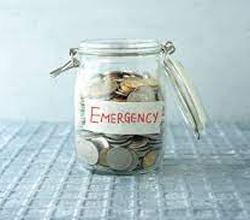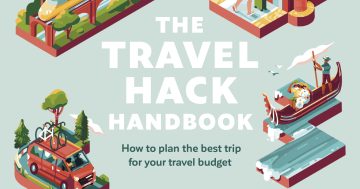Pema Bakshi* outlines the basics starting and spending an emergency fund for those who think saving such a big chunk of money may be out of their reach.
 We always hope for the best, but if the pandemic has taught us anything, it’s to be financially prepared for the worst.
We always hope for the best, but if the pandemic has taught us anything, it’s to be financially prepared for the worst.
Even if you don’t have any dependents and you know you’ll always have a place to live (like your parents’), the best advice anyone can give you regarding money and future-proofing is to have savings to fall back on should anything leave you out in the water.
But we’re not just talking about your regular savings for your goals, but a specific emergency fund.
What is an emergency fund?
An emergency fund consists of money you save to cover unexpected costs.
This could be things like losing your job, needing car repairs, unexpected travel or an urgent medical bill for
It provides a financial safety net, so you don’t have to worry about going through the process of borrowing money if something were to ever happen to you, your income or your family.
Where it differs from a ‘sinking fund’ is that it’s not to meet a particular goal, per se.
This is why there can be some confusion around how much should go in there, because you’re not working towards a specific purchase.
But while that can make all the savings a little unsatisfying, trust us when we say, it’s still very worth it.
How much should you have in an emergency fund?
According to most experts, the general rule of thumb is to have enough money to keep up your living expenses for at least three months.
But depending on your situation, you may want to extend that to six months.
And if you’re someone that likes to live a life of leisure, it’s up to you if you want to budget for non-essential spending too.
To calculate your living expenses, it’s recommended that you add up your rent, bills (both utility and other non-negotiables like insurance and phone), transport and groceries.
On top of those fundamental needs, it’s up to you if you want to include elective subscriptions like streaming services.
Once you figure out how much you need to spend on the basics, you can pad it out a bit to allow for a small entertainment budget so you can still enjoy things like takeaway dinners or a movie once in a while.
From there, it’s simply a matter of multiplying that by the time frame (3 or 6 months) and making that the base goal of where you should be.
How do you start an emergency fund?
Obviously this depends on your income, but as a reference, my own emergency fund came together when I began putting $50 aside each week — separate from my regular savings.
Now and then, when I came into bonuses or other forms of extra cash, I’d add in a little more on a whim.
Two years later, that equated to $8k sitting pretty in an account that I can now rest easy, knowing it will get me by should I ever need it.
I barely noticed the missing funds week-to-week as I automated the transfers and now I feel a lot more secure knowing it’s there.
If you’re still catching up on your debt, don’t stress.
Plenty of people still have emergency funds while living with debt.
In fact, it could be said that it’s more important than ever to have these savings if you have sizeable debts.
How do you use an emergency fund?
Everyone’s idea of an emergency can vary.
For most people, it’s the ability to limit obstacles that present in their lives.
This means being able to pay rent, bills and food to keep us going when we’re suddenly drained of cash due to a loss of income or an unexpected bill.
The key to maintaining an emergency fund is learning the difference between a tricky situation and a desperate one.
You don’t desperately need an expensive dress because you got a last-minute invite to your ex’s engagement party.
But you may desperately need expensive dental work that isn’t covered by your insurance.
*Pema Bakshi is style and living editor at Refinery29 Australia.
This article first appeared at refinery29.com.











